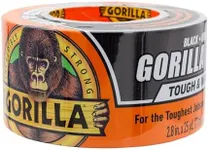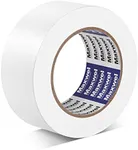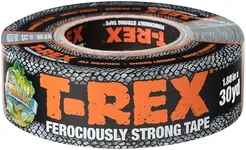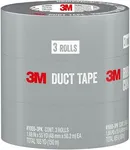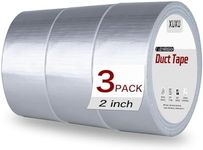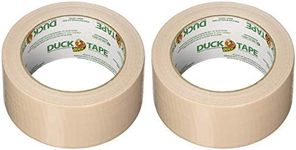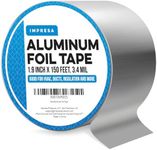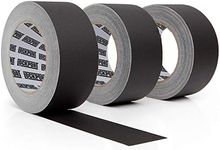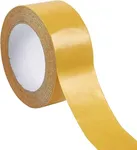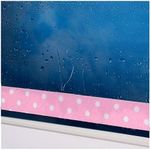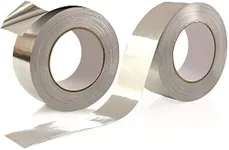Buying Guide for the Best Waterproof Duct Tape
When it comes to choosing the right waterproof duct tape, it's important to consider the specific needs of your project. Waterproof duct tape is designed to provide a strong, durable seal that can withstand exposure to water and other elements. To ensure you select the best product for your needs, you'll want to evaluate several key specifications. Understanding these specs will help you make an informed decision and ensure that the tape you choose will perform well in your intended application.Adhesive StrengthAdhesive strength refers to how well the tape sticks to surfaces. This is crucial because a strong adhesive ensures that the tape will stay in place, even in wet conditions. Adhesive strength can vary from light to heavy-duty. Light adhesive strength is suitable for temporary fixes or light-duty applications, while heavy-duty adhesive strength is ideal for long-term repairs and heavy-duty applications. Consider the surface you will be applying the tape to and the conditions it will face to determine the appropriate adhesive strength for your needs.
Water ResistanceWater resistance indicates how well the tape can withstand exposure to water. This is a key feature for waterproof duct tape, as it determines the tape's ability to maintain its seal and adhesive properties when wet. Water resistance can range from water-repellent to fully waterproof. For projects that will be exposed to heavy rain or submerged in water, fully waterproof tape is necessary. For less demanding applications, water-repellent tape may suffice. Assess the level of water exposure your project will encounter to choose the right level of water resistance.
DurabilityDurability refers to the tape's ability to withstand wear and tear over time. This includes resistance to tearing, abrasion, and environmental factors such as UV rays and temperature fluctuations. Durable tape is essential for long-lasting repairs and outdoor applications. Durability can be categorized as low, medium, or high. Low durability tape is suitable for short-term or indoor use, medium durability is good for general-purpose use, and high durability is ideal for demanding outdoor or long-term applications. Consider the environment and duration of use to select the appropriate durability level.
FlexibilityFlexibility is the tape's ability to conform to irregular surfaces and shapes. This is important for ensuring a tight seal on uneven or curved surfaces. Flexible tape can easily wrap around corners and contours, making it versatile for various applications. Flexibility can range from low to high. Low flexibility tape is more rigid and best for flat surfaces, while high flexibility tape is more pliable and suitable for complex shapes. Think about the surfaces you will be taping and whether they require a more flexible tape to achieve a proper seal.
Width and LengthWidth and length refer to the dimensions of the tape roll. The width determines how much surface area the tape can cover in a single pass, while the length indicates how much tape is available for use. Wider tape provides more coverage and is useful for larger repairs, while narrower tape is better for precision work. Length is important for ensuring you have enough tape to complete your project. Tape widths typically range from 1 inch to 4 inches, and lengths can vary from a few yards to over 50 yards. Consider the size of your project and the amount of tape needed to choose the right dimensions.
